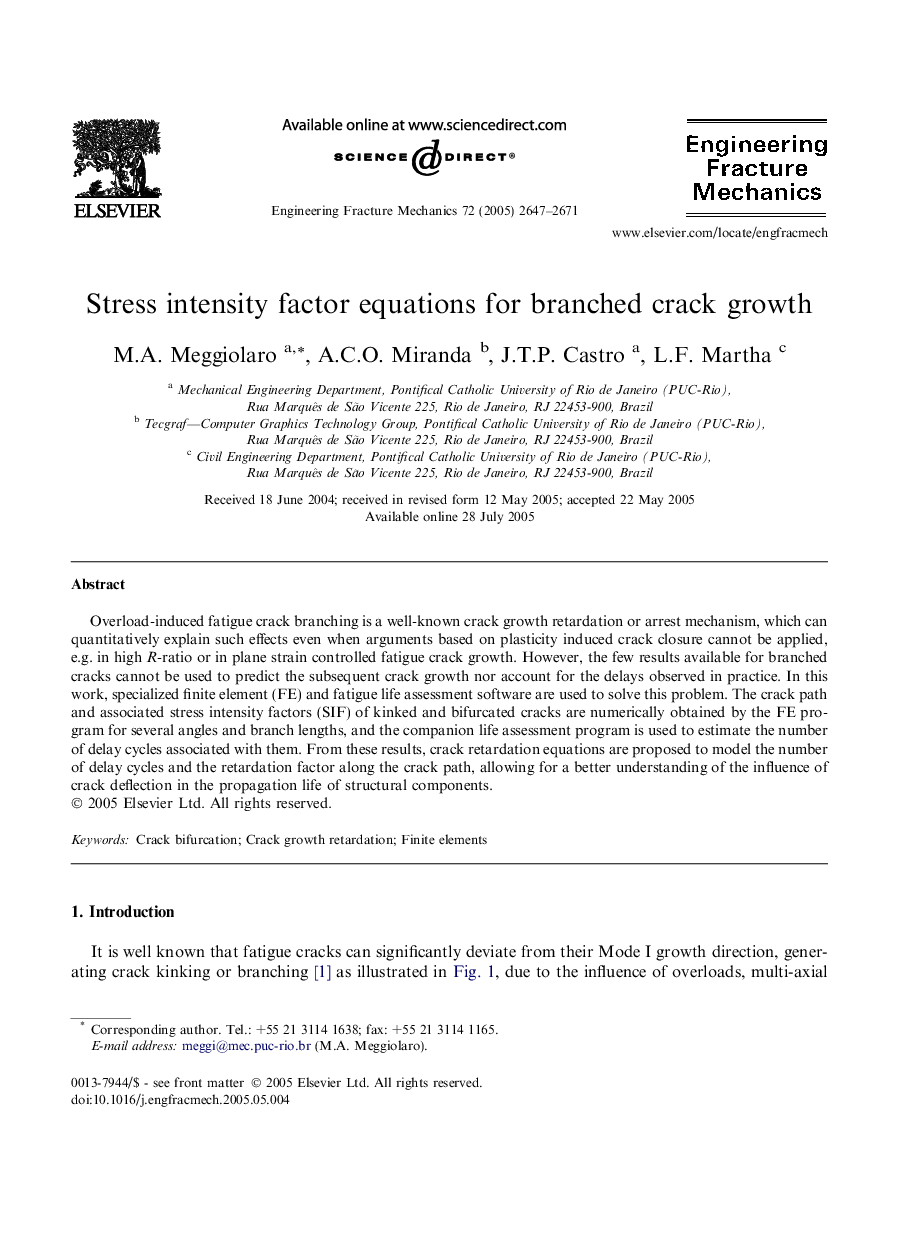| Article ID | Journal | Published Year | Pages | File Type |
|---|---|---|---|---|
| 772018 | Engineering Fracture Mechanics | 2005 | 25 Pages |
Overload-induced fatigue crack branching is a well-known crack growth retardation or arrest mechanism, which can quantitatively explain such effects even when arguments based on plasticity induced crack closure cannot be applied, e.g. in high R-ratio or in plane strain controlled fatigue crack growth. However, the few results available for branched cracks cannot be used to predict the subsequent crack growth nor account for the delays observed in practice. In this work, specialized finite element (FE) and fatigue life assessment software are used to solve this problem. The crack path and associated stress intensity factors (SIF) of kinked and bifurcated cracks are numerically obtained by the FE program for several angles and branch lengths, and the companion life assessment program is used to estimate the number of delay cycles associated with them. From these results, crack retardation equations are proposed to model the number of delay cycles and the retardation factor along the crack path, allowing for a better understanding of the influence of crack deflection in the propagation life of structural components.
